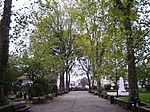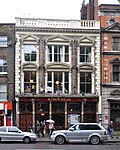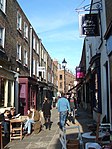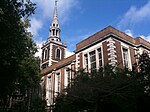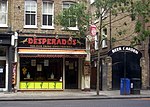The Screen on the Green

The Screen on the Green is a single screen cinema facing Islington Green in the London Borough of Islington, London. The current building was opened in 1913 and it is one of the oldest continuously running cinemas in the UK. It is an example of the many purpose-built cinemas that followed the regulations set by the Cinematograph Act 1909. It is distinctive in the local area due to its façade outlined in red neon, along with a large canopy used for advertising current and upcoming films and events. Since 2008, the cinema has been operated by Everyman Cinemas Group, who have expanded their interests into a unique premium cinemas across London (including the original Everyman Cinema in Hampstead), Surrey and Hampshire. Now retitled as 'Everyman Screen on the Green', the cinema offers a variety of films and special events, including the National Theatre Live, live Q&As, film festivals and seasons. The venue is equipped with Sony Digital 4K projectors and Dolby Digital surround sound.
Excerpt from the Wikipedia article The Screen on the Green (License: CC BY-SA 3.0, Authors, Images).The Screen on the Green
Upper Street, London Highbury (London Borough of Islington)
Geographical coordinates (GPS) Address External links Nearby Places Show on map
Geographical coordinates (GPS)
| Latitude | Longitude |
|---|---|
| N 51.536846 ° | E -0.103641 ° |
Address
Screen on the Green
Upper Street 83
N1 0NP London, Highbury (London Borough of Islington)
England, United Kingdom
Open on Google Maps


